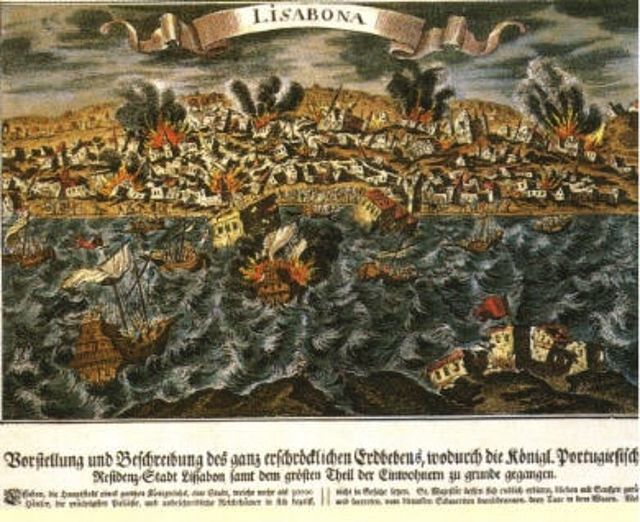Spanish invasion of Portugal (1762)
The Spanish invasion of Portugal (1762) between 5 May and 24 November, was a military episode in the wider Fantastic War in which Spain and France were defeated by the Anglo-Portuguese Alliance with broad popular resistance. It involved at first the forces of Spain and Portugal until France and Great Britain intervened in the conflict on the side of their respective allies. The war was also strongly marked by guerrilla warfare in the mountainous country, which cut off supplies from Spain, and a hostile peasantry, which enforced a scorched earth policy as the invading armies approached that left the invaders starving and short of military supplies and forced them to retreat with heavy losses, mostly from starvation, disease, and desertion.
William, Count of Schaumburg-Lippe, generalissimus of the Anglo-Portuguese forces that thrice defeated the Spanish and French offensives against Portugal. Painting by Joshua Reynolds.
The 1755 Lisbon earthquake horrified Europe, sparking a debate about the nature of its causes among the main European philosophers, mainly between Voltaire and Rousseau: Providential or natural? The famous pamphlet A Spanish Prophecy, published in 1762 in Madrid, intended to prove that all the carnage suffered by the Portuguese during the earthquake, tsunami and ensuing fire, were divine punishment for their alliance with the British heretics. British help included 6,000 barrels of meat, 4,000 of butter,1,200 sacks of rice, 10,000 quarters of flour and £100,000 for relief (while Spanish and French money offers were refused)
The city of Oporto, on the north bank of the Douro River. Its fate was decided at the Battle of Douro (25 May 1762).
William, Count of Schaumburg-Lippe, allied supreme commander, and one of the best soldiers of his time. Outnumbered in a proportion of three to one, he successfully met the challenge. He trained intensively the Portuguese army in a record time, and chose to use small units against the flanks and rear of the invader's big battalions (taking advantage of the mountainous terrain). He destroyed the enemy's will to fight by starvation, the bleeding of his forces in a guerrilla warfare, and by an exhausting war of marches and counter marches (the so-called "
Pedro Pablo Abarca de Bolea, 10th Count of Aranda
Pedro Pablo Abarca de Bolea y Jiménez de Urrea, 10th Count of Aranda, was a Spanish statesman and diplomat.
Portrait by Francisco Jover y Casanova
18th century porcelain bust of Aranda (M.A.N., Madrid).
Portrait of Aranda by Ramón Bayeu, 1769 (Museo de Huesca).







